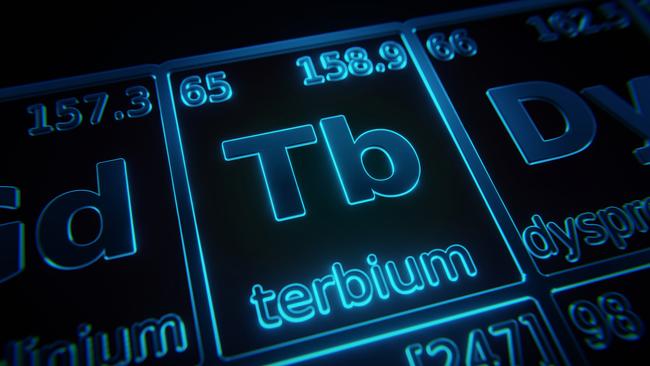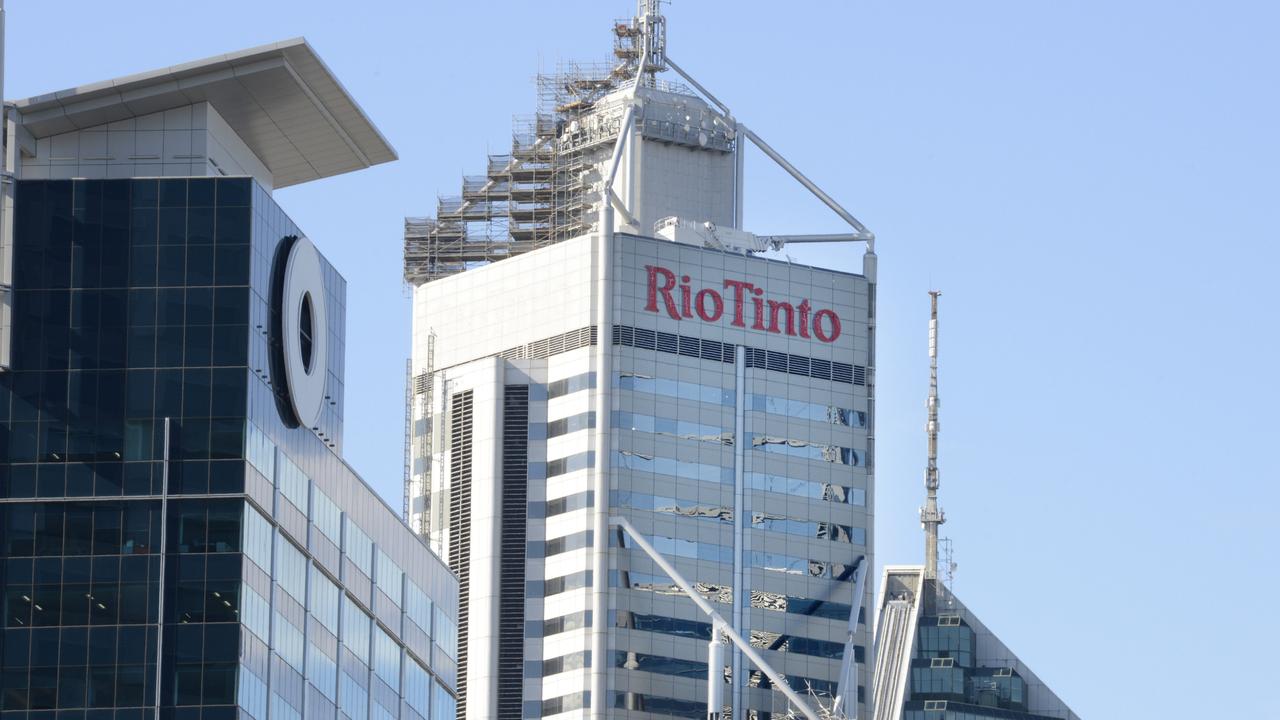Australia can play key role in global supply of rare earths
As China restricts exports of rare earths, it is clear Australia has an opportunity to fill a vital gap in the global supply chain.

Business
Don't miss out on the headlines from Business. Followed categories will be added to My News.
In the middle of an election campaign the Albanese government has vowed to stockpile materials that our major defence partner, the US, is so desperate to secure that it is smashing fluorescent lights to gain the material.
In theory the lights of Times Square are endangered by the Chinese restrictions on exports of terbium and dysprosium. They also cover lutetium and yttrium, which are important in lutetium-based prostate cancer treatments. Australia has a leading role in these treatments, but the Australian government is being outmanoeuvred by the Swiss.
Whoever wins the next election has to understand that we have responsibilities to both the national interest and to the Western world, led by the US. The Swiss showed how we can be treated like fools, so we need to understand the complete game.
Potentially by far the most devastating blows Chinese President Xi Jinping has delivered to US President Donald Trump are Xi’s looming restrictions on terbium and dysprosium, which go to the heart of the US defence and technology base.
Australian Resources Minister Madeline King is calling for a strategic reserve of critical minerals, but has not named terbium and dysprosium.
In addition, she did not mention that, while Australia has exciting terbium and dysprosium deposits (plus lutetium and yttrium), at the moment it does not actually produce these materials.
King proved to be one of the most astute of the Albanese government ministers, but the complexity of the rare earths jungle has caught her out.
If we pursued a stockpiling policy at a time of crucial US shortage, it would endanger our relations with the US irrespective of who was president. Australia’s involvement in heavy rare earths will be a rapidly changing scene. We need to understand the moving parts.
Lynas has built an early-stage processing facility in Kalgoorlie, although the Kalgoorlie material is then sent to Malaysia for the next stage of treatment. But extracting terbium and dysprosium requires a third plant.
The US government is funding a $400m Lynas refinery in Texas to undertake the process.
A similar third plant may be erected in Malaysia, which now understands the game. But the bottom line is that, while we conduct early processing in Kalgoorlie, Australia will not produce the vital terbium and dysprosium from the local ores. However, the Kalgoorlie terbium is not sufficient to dramatically change the US situation.
But also in Western Australia the federal government is backing construction of a refinery by Iluka Resources that will tap rare earth raw materials in beach sand tailings and later material from Northern Minerals, which the Chinese unsuccessfully tried to control. When the refinery is completed it will be able to produce terbium, dysprosium and other heavy rare earths. But again, the quantities involved are not vast and talk of stockpiling is a long way off – if ever.
The envisaged treatment plant for Australian Rare Earths’ Koppamurra deposit on the border of South Australia and Victoria will produce a mixed rare earth carbonate similar to that produced by Lynas in Kalgoorlie.
We have not reached the stage of deciding whether the Koppamurra “mixed rare earth carbonates” should complete their treatment in Australia or overseas.
At Bamboo Creek in the Pilbara, the Haoma rare earth ore bodies carry some of the highest grades of terbium and dysprosium in the world.
There is global excitement, but as we have seen so often in Australia, early drill results do not always translate to the anticipated massive ore bodies. But much of the drilling was undertaken by BHP when it held the leases, adding an extra degree of confidence.
Further drilling is required, but there are a number of treatment options being considered.
Gold will first be extracted via the Elazac process, which greatly assists the economics. The high content of terbium and dysprosium (plus lutetium and yttrium) in the remaining material can potentially be treated several ways, including linking it into the Iluka or Lynas systems. But the terbium is combined with iron, which requires special treatment, and it can be treated in an acid reduction furnace process.
But then there is global excitement developing over embracing radical radiation technology.
Australia’s Sydney nuclear reactor ANSTO operation did not develop the low-cost Australian/German prostate cancer treatment, but it produced the vital Lutetium-177 base component using radiation on the Ytterbium-176 metal. Both lutetium and ytterbium are contained in the Bamboo Creek ore. The ANSTO techniques to produce Lutetium-177 maybe be adapted to separate terbium and dysprosium from the Haoma material.
It’s a very long shot, but it changes the world. And it might even wake up sleeping Canberra when it comes to prostate cancer. That’s harder.
More Coverage
Originally published as Australia can play key role in global supply of rare earths




